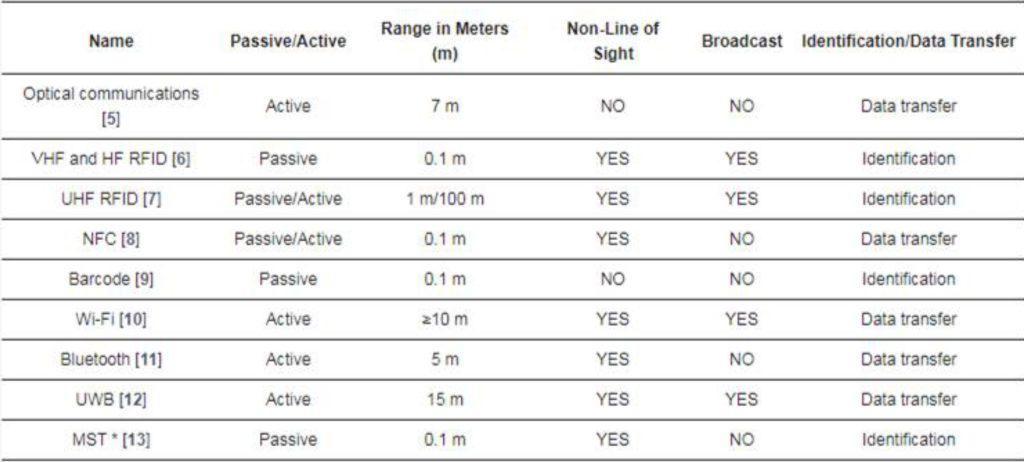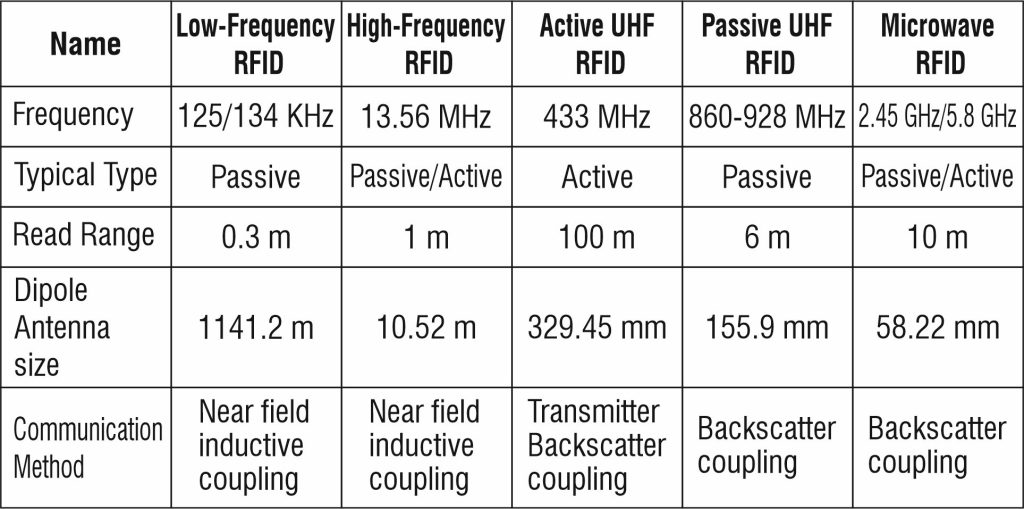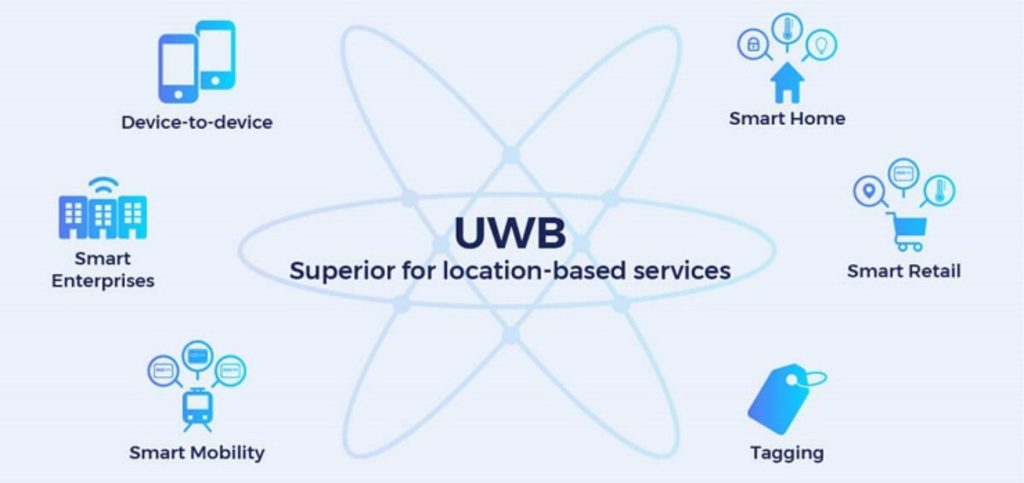Abstract
Due to the advancement of the Internet of Things (IoT) and smart technology Wireless short-range communication has become widespread in the modern era. This technology is now utilized in various sectors, including lighting, banking, medical, and industrial applications. This article aims to elaborate the present and forthcoming advancements in wireless short-range communication. This article also featured the innovations made in communication protocols, such as Bluetooth, RFID and NFC, in order to better accommodate modern applications. NFC is appearing as an emerging development in short-range wireless communication that combines power and data transmission into a single carrier. The initiation of most low-power, short-range communication applications rely on an ultra-low-power microcontroller.
Introduction
Short-range wireless technology is essential part of modern life, with its reach continuing to grow. It is used in wireless payments in shops, Security and surveillance and banking to TV remotes at home. The widespread use of smartphones, make it ubiquitous in the modern era, reaching above 80% ownership in Germany, the UK and the USA and 4.6 billion smartphone users worldwide in 2023, bringing short-range wireless technology to the forefront of applications.

Short-range wireless system is passive or active is crucial in grasping its use cases and applications. Active refers to a state where both sides of the overall system are powered at the same time, whereas passive indicates a condition where only one side is powered i.e., the opposite side receives power through the transmission. Passive system such as wireless payments and credit cards. In this instance, the credit card receives power via inductive coupling from the RFID reader, indicating that it is a passive system, as one side is not powered by an internal power supply.
Table 1 displayed below shows the most prevalent short-range wireless technologies, with the range indicating the highest rated distance of their typical application.
Short-range wireless technologies such as Wi-Fi and NFC are constantly evolving, with new revisions being released on a regular basis. For instance, WI-Fi 6 was released in 2019, and RFID ISO/IEC was revised in 2020. The reason behind these constant revisions is the evolution of parallel technology and its applications. For instance, NFC technology is now a standard feature in most modern smartphones. However, it was introduced in 2004 and was developed in anticipation of the growing popularity of mobile phones. Similarly, low-power embedded systems currently use Bluetooth mesh and dynamic NFC technology. However, they may evolve to adapt to ultra-low-power or batteryless applications in the future. It is evident that NFC, UHF, HF, and VHF RFID are interlinked. NFC communication protocol

operates at a frequency of 13.56 MHz and shares protocols with HF RFID (ISO14443 and ISO15963). However, NFC has distinct features and use cases compared to RFID. One notable difference is that some NFC devices can switch between tag and reader modes, enabling two-way data transfer. Additionally, NFC is limited to Peer-to-Peer communication, whereas RFID may transmit in broadcast mode. There are multiple different frequencies used for RFID technology: 125 KHz (VHF), 13.56 MHz (HF), 433 MHz (Active UHF), and 865–915 MHz (Passive UHF). Each frequency serves a specific purpose. The 125 kHz (VHF) and 13.56 MHz (HF) frequencies operate through inductive coupling. The 433 MHz (Active UHF) and 2.45 GHz (Active Microwave) frequencies are used for active tags, which mean they require a battery but have an enhanced transmission range. On the other hand, the 865–915 MHz (Passive UHF) frequency utilizes backscatter to transmit data.
Another crucial area is the network type of the protocol [17]. A Personal Area Network (PAN) is used for connecting devices within a small area, typically within a range of less than 10 meters. A local area network (LAN), on the other hand, is used to connect devices within a wider location such as a building, office or home. A LAN is normally less than 100 meters. Lastly, a wide area network WAN is used to connect devices over a larger area, including a metropolitan area and international connections. PAN examples include the majority of short-range wireless protocols such as Bluetooth and infra-red connections. However, Wi-Fi is an example of a LAN network. WAN technologies are not typically used in short-range networks.
India’s Wearable Device Market
According to International Data Corporation’s (IDC) India Monthly Wearable Device Tracker, India’s wearable device market grew by 2.1% (YoY) to 25.6 million units after growing by at least double digits consecutively since 4Q17. The average selling price (ASP) for overall wearables declined by 17.8% in 1Q24, from US$22.62 to US$18.59, a record low.

RFID
There are two main components to every RFID system: readers and tags. All RFID readers transmit data that is modulated by an RFID tag. There are two main methods of communication through RFID depending on the frequency used as seen in Table 3 near field inductive coupling or backscatter coupling. Near field coupling is used by LF and HF RFID due to the longer wavelength.

Table 3. Table comparing RFID technology.
A system is said to be in near field at a distance of C/2pfc/2pf where C is the speed of electromagnetic radiation and f is frequency. By using the relevant frequencies, we can delimit this for the relevant bands as:

Identification is being the most prominent use case in many RFID applications. It is widely used in industries such as retail, logistics, healthcare and asset tracking. There is another use case where RFID is used as a sensor. This significantly changes the use cases of RFID and has the potential to use RFID as the communication protocol to obtain a low-power passive sensor, which, in some research, is a batteryless system.
There are two main methods for RFID sensors: chipless and chip-based.

Chip vs. chipless systems: These the two main design methods. One is centered on using a solution-on-chip to perform communication. While chipless systems use many different types of communication techniques, some examples are On–Off Keying (OOK), Pulse Position Modulation, Phase Modulation and Backscattered-Based Tags.
Battery-assisted RFID sensors: These are active tags for RFID Sensors. This is due to the different use cases for UHF active RFID at 433 MHz, which is most commonly used for long-range identification or tracking. The battery’s main purpose is to collect data and then use passive RFID to transmit data, saving power and conserving lifespan.
Batteryless RFID sensors: They have no battery, which significantly changes the dynamics of the tag, as it is a passive tag with active features. It uses a low-power sensor to gather data and uses backscatter to send the signal. The WISP Wireless Identification and Sensing Platform is one of the design ideas for a batteryless RFID. There are many different types of batteryless RFID designs, and Chipless, Antenna Resonance, Multi-Port Architecture, and Digitally Integrated are four different types of batteryless RFID sensor methods.
Hybrid RFID systems: They can be either batteryless or battery-assisted RFID sensors; however, they are normally associated with battery-assisted RFID. This can be divided into a communication or power hybrid system. A communication-hybrid system uses another short-range communication technology to transfer data.
Bluetooth Low Power Applications:

Bluetooth Version 1 was introduced in 1999; however a major development occured in 2010 when Bluetooth 4 was introduced,, bringing Bluetooth low energy (BLE). BLE has unique applications in sensor networks and Io, such as logistics, retail, and medical.
Due to the higher power consumption of BLE compared with RFID, the most viable option for energy harvesting is solar. There are a number of commercial BLE hybrid systems available, such as Cyalkit-E02 BLE beacon and Gimbal BLE beacon.
Wi-Fi:

Wi-Fi has many versions and is defined in IEEE 802.11. Wi-Fi is used in IoT to link PAN and LAN networks to a database; this is a critical infrastructure in IoT applications.
Wi-Fi transmitters have a longer range than RFID transmitters; RFID transmitters have significantly lower power due to backscatter as well as having significantly reduced cost per device.
Compared to RFID or BLE another interesting use case of Wi-Fi is in energy harvesting, Wi-Fi could act as a transmitter for RF energy harvesting, which could power an ultra-low-power sensor in an indoor environment.
Ultra Wide Band (UWB) Short-Range Applications:

Ultra-WideBand (UWB) is defined in IEEE 802.15.4, and the primary use case is location-based sensing, specifically, the time of flight sensing. One of the main differentiation factors between UWB and other wireless short-range communication methods is the frequency band as indicated in the name. There are 16 pre-defined channels, with channels 1–16 ranging from a center frequency of 3494.4 MHz and channel 16 having a center frequency of 9484.8 MHz
UWB communication offers high data transfer rates, precise positioning capabilities, resistance to interference, and ultra-low average power consumption, making it well suited for a wide range of applications across industries and applications that require identification and tracing capabilities.
Near Field Communication (NFC):

NFC is a wireless technology that allows devices to communicate and exchange data within a short range of a few centimeters. It is commonly used for contactless payments, mobile ticketing, and secure access control. NFC is also used in smart home devices to enable easy pairing and connectivity.
NFC is based on RFID protocols ISO 14443 and ISO 15963 and has five tag types. Type 1–4 use ISO 14443 and have a range of 100 mm, while type 5 NFC tags use ISO 15963 and have a range of 1 m. NFC has three operating modes specified in the standard: Read/Write, Peer-to-Peer, and Card Emulation.
mmWave
Millimeter wave (mmWave) uses short-wavelength electromagnetic waves is a special class of radar technology. A radar system can determine the range, velocity and angle of the objects by capturing the reflected signals.
5G
5G is the fifth generation of wireless technology that promises to bring faster internet speeds, lower latency, and improved network capacity. It uses higher radio frequencies and advanced antenna technology to deliver blazing-fast internet speeds. 5G is expected to support emerging technologies like the Internet of Things (IoT), self-driving cars, and virtual reality (VR).
Differences between the previous generations of mobile networks and 5G
LoRaWAN
LoRaWAN is a proprietary LPWAN-connectivity protocol developed by Semtech. It is renowned for its low power usage and high transmission range (even when compared to other LPWANs). Also, it has a high resistance to interference, as its wireless modulation is based on technology developed for the military and space industry. In 2017 a LoRaWAN packet was transmitted over a distance of 702km, breaking previous records. These unique characteristics make it the ideal connectivity protocol for a variety of IoT use cases.
Li-Fi
Li-Fi is a wireless technology that uses light waves to transmit data. It is considered a faster and more secure alternative to Wi-Fi. Li-Fi has the potential to revolutionize the way we use the internet as it can provide higher speeds and better bandwidth than Wi-Fi. However, its limited range and susceptibility to interference have hindered its widespread adoption.
Zigbee
Zigbee is a wireless technology specifically designed for low-power, low-data rate applications. It is commonly used in smart home devices, industrial automation, and healthcare monitoring systems. Zigbee devices can form a mesh network, allowing devices to communicate with each other and extend the network’s range.
Ultra-Low-Power Microcontrollers:
Ultra-low-power microcontrollers are a critical part of dynamic short-range wireless communication systems, as they limit the power consumption in dynamic applications such as BLE, Zigbee, and batteryless NFC. Ultra-low-power microcontrollers were distinguished from standard microcontrollers by their unique characteristics. The supply voltage and the inclusion of multiple low-power modes differentiate the Ultra-Low power microcontroller from standard microcontrollers
Many factors affect ULP microcontrollers, but the most critical is power consumption. The goal of ULP microcontrollers is to have the lowest possible power consumption while getting the most work done.
List of some of the Ultra-low-power microcontrollers available in the market are:-
• Nordic Semiconductor nRF52840
• Texas Instruments MSP430FR5969
• STMicroelectronics STM32L4
• Microchip Technology ATmega328P
• Renesas RL78/G13
• NXP Kinetis KL Series
• Cypress PSoC 6
• Analog Devices ADuCM302/ADuCM305
• Maxim Integrated MAX326xx
Challenges and Opportunities
Short-range wireless technologies face various challenges and issues. Security vulnerabilities are a significant concern, especially in IoT infrastructures where cybercriminals exploit wireless networks for large-scale attacks. Additionally, the limited penetration of NFC hardware hinders its widespread application in mobile devices, impacting data confidentiality and security. In healthcare, selecting the right protocol for data exchange among Bluetooth, BLE, Wi-Fi Direct, and NFC is crucial, considering factors like usability, transmission time, and power consumption. Moreover, the design and implementation of short-range wireless networks, such as Bluetooth, require seamless integration and service availability for efficient connectivity and data sharing. These issues highlight the importance of addressing security, hardware compatibility, and protocol selection in optimizing the performance and reliability of short-range wireless technologies.
Conclusion:
The main conclusion from comparing different short-range wireless communications is that protocols can evolve to conform to different application scenarios, for example, the change from Bluetooth to BLE or NFC to batteryless NFC. Additionally, protocol optimizations such as those seen in Wi-Fi are critical to keeping protocols prevalent. Research is continuing to advance the current protocols to improve operational parameters such as power consumption, range, data rates or to add new, more advanced, features.
Factors influencing IoT and embedded systems contribute to the growing interest in short-range wireless communication, Increasing number of devices, as well as the goal of being able to make smart devices with smaller size and longer life. Short-range wireless communication has many solutions, depending on the application and use case. It connects at least two systems together in a range of different ways; with the protocols in this review.
Battery less and hybrid energy systems are rapidly evolving and have numerous advantages over traditional systems. . One of the most significant advantages of hybrid systems is their lifespan, which can last for a few years in the right conditions.
References:
https://www.mdpi.com/2079-9268/14/2/27
https://www.linkedin.com/pulse/comprehensive-list-top-wireless-technologies-prof-dr-cebo-daniel-c7ste
https://typeset.io/questions/issues-for-short-range-wireless-technologies-4n9bm3tn66












